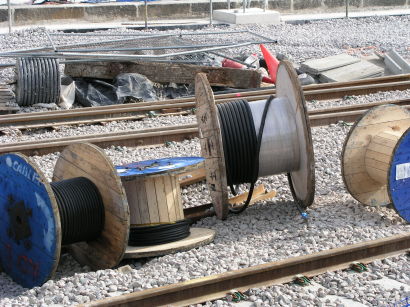THE GREAT Western Main Line is to be electrified to Cardiff and Bristol.
A full business case for electrifying the Valley Lines is also to be prepared.
The Intercity Express Programme is going ahead, and bi-modal Hitachi trains will run on the Great Western and East Coast Main Lines.
An IEP assembly plant has been confirmed for County Durham, which the transport secretary said could create thousands of jobs.
New bimodal Hitachi trains will run on the Great Western and also the East Coast Main Line, switching to diesel mode beyond Cardiff or Edinburgh.
In a detailed statement to the House of Commons, transport secretary Philip Hammond said: “I am resuming the IEP procurement and proceeding with the proposal that Agility Trains have put forward as preferred bidder.
“Hitachi is today confirming its plans to locate its European train manufacturing and assembly centre at Newton Aycliffe in County Durham. This investment is expected to create at least five hundred direct permanent jobs as well as hundreds of temporary construction jobs. Thousands more job opportunities will be created in the UK manufacturing and service supply chains.
“We will now work with Agility Trains with a view to reaching financial close by the end of this year. This is, of course, subject to the Government continuing to be satisfied that the proposal offers value for money as the commercial negotiations are concluded and that the final arrangements are compliant with the United Kingdom’s EU obligations.”
Mr Hammond said he would asking Network Rail to add Didcot–Bristol Parkway–Cardiff to its electrification programme immediately. In response to a question, he confirmed that Swindon–Bath Spa–Bristol Temple Meads and Bristol Parkway–Bristol Temple Meads would be included.
He has already announced that the GWML is to be electrified from Airport Junction, near Paddington, to Oxford and Newbury.
Journey times on the GWML will be reduced, bringing the time from London to Cardiff down to 1h42, and reducing the time to Bristol by 22 minutes.
Mr Hammond added that a case also appeared to exist for electrification of local lines in the south Wales valleys, and a full business case would now be prepared, in conjunction with the Welsh Assembly Government, for the routes to Treherbert, Aberdare, Merthyr Tydfil, Coryton, Rhymney, Penarth and Barry Island.
However, Mr Hammond said the case for electrification onwards from Cardiff to Swansea had not been established. The present hourly service did not appear to justify electrification, and the physical characteristics of the route beyond Cardiff meant that journey times would not be reduced further.
But Swansea would stay under review, and in any case the city would benefit from the acceleration following electrification between London and Cardiff, reducing the London-Swansea journey time to 2h39.
First reactions to the announcement have included one from the watchdog Passenger Focus, which said it welcomed the news about IEP and GWML electrification, even if supporters for the Swansea section would be disappointed. It hoped that more electrification could be approved as the economy recovered, and called for mock-ups of the new IEP trains to be built as soon as possible.
Meanwhile, Whitehall sources have indicated that an announcement about the Thameslink fleet can be expected in May.
The surviving bidders to build some 1,200 new vehicles for Thameslink are Bombardier and Siemens, and although Mr Hammond would not be drawn in the outcome, he did say he believed that Bombardier has a ‘bright future’ in the UK rail industry.


